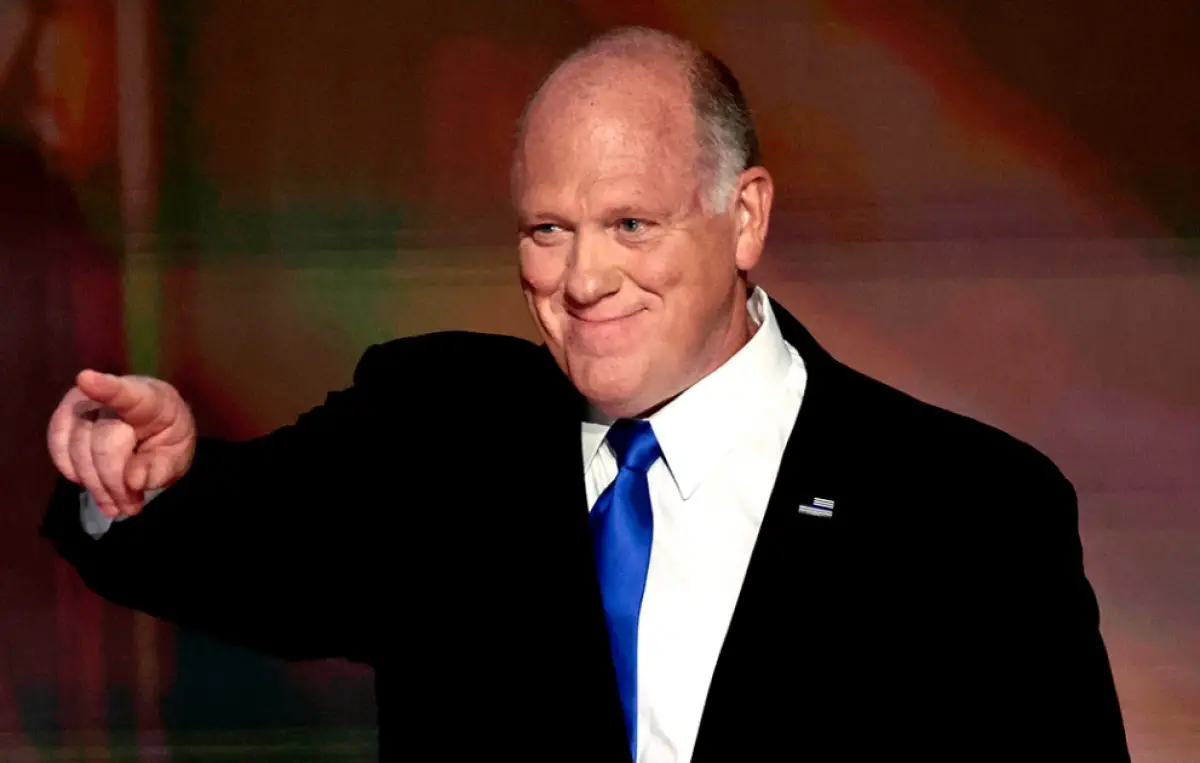“Bringing Consequences With Me”: Border Czar Homan Sends Strong Warning to Criminals and Non-Compliant Cities
In a recent speech at the Conservative Political Action Conference (CPAC), former Border Security Czar Tom Homan delivered a strong message regarding illegal immigration and sanctuary city policies. His remarks emphasized the importance of stricter enforcement and highlighted his administration’s efforts to improve border security. This report takes a closer look at Homan’s statements, the data he presented, and the broader implications of his approach to immigration enforcement.
A Focus on Border Security and Immigration Enforcement
During his address, Homan underscored the success of his administration’s border security measures, particularly in reducing the number of illegal immigrants crossing the U.S. border. He pointed out that in 2023, the number of “gotaways” – individuals who illegally crossed the border without being apprehended – had significantly decreased. “In 2023, we had about 1,800 gotaways a day,” Homan noted. “Yesterday, that number was just 48. While that’s a huge improvement, 48 is still too many. I’m not going to rest until we get that number down to zero.” Homan’s statement reflects the administration’s broader objective to achieve full control over the nation’s borders, emphasizing the importance of reducing violations to zero.
Homan also mentioned that during the first month of the Trump administration, ICE arrested over 21,000 individuals who were in the country illegally. He framed these numbers as proof of the success of the enforcement policies, which focused on detaining illegal immigrants and ensuring that individuals who violated the law were held accountable.
Combating Criminal Gangs and Illegal Activities
A significant part of Homan’s speech focused on the threat posed by criminal organizations operating at the U.S. border. He highlighted specific gangs, including the Venezuelan Tren de Aragua and El Salvador’s MS-13, both of which the administration has designated as foreign terrorist organizations. Homan’s language was direct when discussing these groups, stating, “I’m not going to be satisfied until every criminal alien gang member, every criminal alien, every Tren de Aragua is eradicated from this country.” His comments reflect a firm stance on the need to address violent and organized crime, which Homan believes is exacerbated by illegal immigration.
Homan also addressed the role of individuals who aid criminal organizations, warning that anyone who helps cartels or gangs is, in his view, contributing to terrorist activities. “Anyone who helps these cartels, you are helping a terrorist organization,” he emphasized, underscoring the gravity of the issue from a law enforcement perspective.
Sanctuary Cities and Their Impact
Beyond his focus on criminal organizations, Homan criticized sanctuary cities—municipalities that limit cooperation with federal immigration authorities. These cities have been at the center of debates over immigration enforcement, with some local governments choosing not to honor federal immigration detainers. Homan referred to sanctuary cities as “safe havens for criminals,” arguing that such policies ultimately undermine public safety.
His remarks were particularly pointed when addressing Boston’s Police Commissioner Michael Cox, who had defended his city’s stance on not cooperating with ICE. Homan warned that this refusal to cooperate with federal authorities could have serious consequences. “You said you doubled down on not helping ICE. I’m coming to Boston, and I’m bringing hell with me,” Homan said, expressing his frustration with local policies that he believes put citizens at risk by releasing criminals back into communities instead of holding them for federal authorities.
Acknowledging Law Enforcement Efforts
While his speech was largely focused on criticism of immigration policies, Homan also took a moment to express gratitude for the work of federal law enforcement agencies, including ICE, the U.S. Marshals, the DEA, and the Border Patrol. “God bless the men and women of ICE, the U.S. Marshals, DEA, FBI, ATF, and all our Border Patrol officers,” he said, recognizing the critical role these agencies play in enforcing the nation’s immigration laws.
Homan framed the efforts of these agencies as instrumental in reducing illegal immigration and combating organized crime. However, he made it clear that despite these successes, his work is far from over. His goal is to continue tightening immigration enforcement and eliminate all illegal crossings.
National and International Reactions
Homan’s remarks have sparked reactions both domestically and internationally. While some support his hardline stance, viewing it as necessary to restore order and ensure national security, others argue that his approach could lead to excessive measures that harm individuals and families. Critics worry that his rhetoric could escalate tensions and strain international relations, while supporters believe that his policies are essential to safeguarding American communities.
The debate about immigration enforcement continues to divide opinions across the country. On one side, there are those who believe that strict enforcement is necessary to protect citizens and uphold the rule of law. On the other hand, critics point to the human cost of aggressive policies, particularly for children and families affected by deportation.
Looking Ahead: Balancing Security and Compassion
As the debate continues, it is clear that Homan’s call for stricter immigration enforcement will remain a focal point in discussions about national security and immigration reform. His comments about reducing border violations to zero reflect the administration’s commitment to securing the nation’s borders, while his criticism of sanctuary cities and criminal organizations highlights the challenges faced by law enforcement in combatting illegal activities.
Ultimately, Homan’s remarks reinforce the complex and often contentious nature of immigration policy in the United States. The balance between ensuring border security and addressing the needs of individuals and communities will continue to shape the conversation in the coming months, as lawmakers, officials, and the public debate the future of immigration enforcement.
